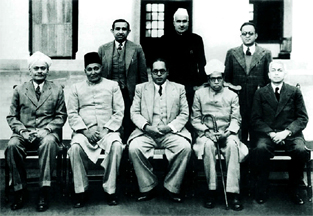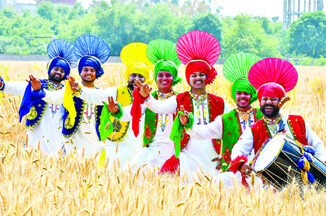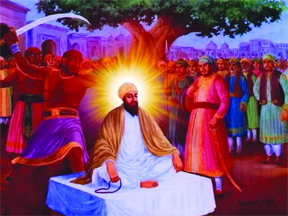
India‘s Constitution, the cornerstone of its democratic framework, is among the lengthiest and most comprehensive in the world. Drafted in the aftermath of independence, it embodies the aspirations of a diverse and vibrant nation. The making of the Constitution was a monumental task that involved the contributions of many visionary leaders. Below is a detailed exploration of some of the luminaries who played pivotal roles in shaping India’s Constitution.
Dr. B.R. Ambedkar: The Chief Architect
Dr. Bhimrao Ramji Ambedkar, often referred to as the “Father of the Indian Constitution,” was the chairman of the Drafting Committee. A scholar of unparalleled brilliance, Ambedkar had a deep understanding of law, economics, and social justice. His leadership ensured that the Constitution addressed the systemic inequalities that plagued Indian society. Ambedkar’s efforts to enshrine the principles of equality, liberty, and fraternity were particularly aimed at dismantling caste discrimination and empowering marginalized communities. The inclusion of Fundamental Rights and the Directive Principles of State Policy are among his lasting contributions.
Jawaharlal Nehru: The Visionary Leader
As the first Prime Minister of independent India and an influential member of the Constituent Assembly, Jawaharlal Nehru’s vision shaped the foundational principles of the Constitution. Nehru was a staunch advocate of democracy, secularism, and a scientific temper. His contributions to the Preamble, which encapsulates the ideals of justice, liberty, equality, and fraternity, were significant. Nehru’s speeches and leadership during the drafting process inspired the Assembly to aim for a progressive and inclusive Constitution.
Sardar Vallabhbhai Patel: The Integrator
Sardar Patel, known as the “Iron Man of India,” was instrumental in unifying the princely states and integrating them into the Indian Union. As a member of the Constituent Assembly, Patel emphasized the importance of a strong federal structure with adequate autonomy for states. His pragmatic approach influenced the administrative framework of the Constitution, ensuring a balance between central authority and state powers. Patel’s efforts ensured the smooth functioning of India’s democracy in its formative years.
Dr. Rajendra Prasad: The Guiding Hand
Dr. Rajendra Prasad, who later became the first President of India, served as the President of the Constituent Assembly. Renowned for his patience, wisdom, and impartiality, Prasad played a critical role in guiding the debates and discussions within the Assembly. His leadership ensured that diverse viewpoints were respected and incorporated into the Constitution. Prasad’s calm demeanor helped maintain a sense of unity and purpose among the members.
Alladi Krishnaswamy Iyer: The Legal Luminary
Alladi Krishnaswamy Iyer, a distinguished lawyer and a member of the Drafting Committee, brought unparalleled legal expertise to the Constitution-making process. His contributions were particularly significant in framing the legal and judicial provisions of the Constitution. Iyer was a strong advocate for a unified judiciary and the rule of law, principles that remain central to India’s governance.
K.M. Munshi: The Cultural Custodian
Kanhaiyalal Maneklal Munshi, a lawyer, freedom fighter, and writer, played a key role in ensuring that India’s Constitution reflected its rich cultural heritage. Munshi was instrumental in drafting the Directive Principles of State Policy, which outline the aspirational goals for governance. He also championed the cause of linguistic reorganization and cultural preservation, ensuring that the Constitution acknowledged India’s diversity.
B.N. Rau: The Constitutional Adviser
Benegal Narsing Rau, the constitutional adviser to the Constituent Assembly, was a pivotal figure in the initial stages of drafting the Constitution. Rau prepared the first draft of the Constitution and conducted extensive research on global constitutional frameworks. His comparative analysis of constitutions from around the world provided a solid foundation for the Drafting Committee’s work.
Hansa Mehta, Sarojini Naidu and Other Women Leaders
Women leaders like Hansa Mehta, Sarojini Naidu, Durgabai Deshmukh, and Rajkumari Amrit Kaur made significant contributions to the Constitution’s framing. Hansa Mehta was a strong advocate for gender equality and played a role in ensuring that the Constitution upheld women’s rights. Sarojini Naidu, known as the “Nightingale of India,” brought her eloquence and commitment to the Assembly’s discussions, emphasizing the importance of inclusivity and social justice.
The Collective Effort
The drafting of the Indian Constitution was a collaborative endeavor involving 299 members of the Constituent Assembly. Over 11 sessions spanning nearly three years, these members debated and deliberated on various aspects of governance, rights, and responsibilities. The Assembly drew inspiration from global constitutions while ensuring the document reflected India’s unique socio-political context. The final document, adopted on November 26, 1949, represents the collective wisdom, dedication, and vision of these leaders.





Be the first to comment